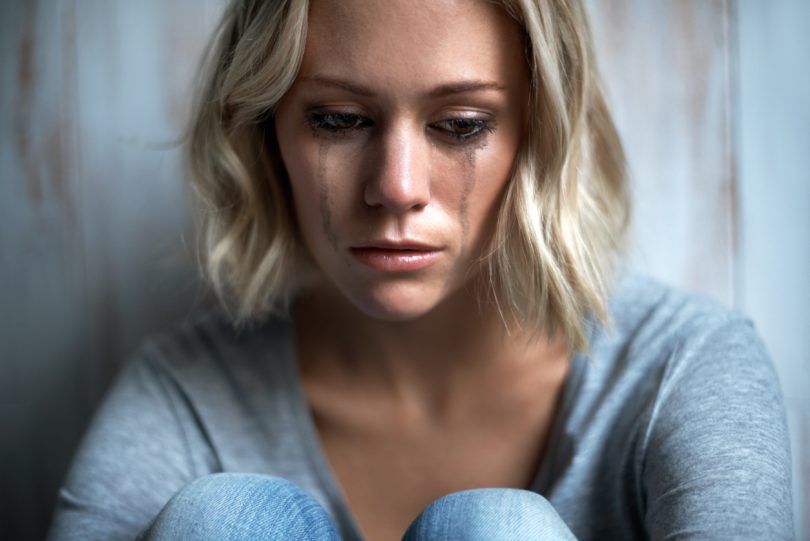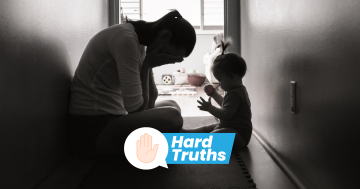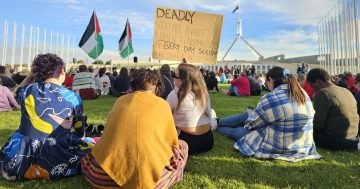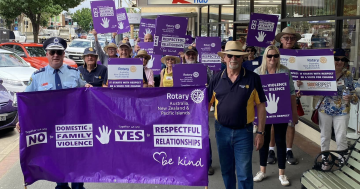
Domestic and family violence services are struggling to keep up with demand said Domestic Violence Crisis Service CEO Mirjana Wilson.
“We have absolutely, exponentially increased the demand on all of our services in the last couple of years. To the point where it is 60-75 per cent more than it was two and a half years ago,” Ms Wilson said.
Over the past few years, there has been an increase in public awareness of domestic and family violence and available support services.
It is no longer a taboo subject. People are now more willing to talk about domestic violence issues and more people are reporting it, said Ms Wilson.
“Suddenly we have this awareness. But with awareness comes a responsibility, to be able to respond. And that is our ongoing challenge,” she said.
“We have [an] increased demand [for] our services. We have a lot of services that are quite stretched in our system.”
Domestic and family violence is the leading cause of death and injury for women under the age of 45 years.
Ms Wilson said it’s a very narrow lens to look at domestic violence as a series of physical assaults, property damage, sexual violence, stalking and harassment.
“It crosses into a whole pile of areas that perhaps we haven’t traditionally considered,” she said.
Domestic and family violence is not a series of one-off incidences; it is a pattern of behaviour that also includes coercive control, social isolation, and psychological, economic and religious abuse, Ms Wilson said.
Many affected by domestic and family violence are aware of the pattern of abuse. However, safety is a good indicator to help people understand if something is not right, she said.
“Regardless of the tactics or the techniques that they are using, if you’re not feeling safe with the person that you are living with, give us a call,” she said.
Helping those affected by domestic and family violence requires a whole of community approach and is not just the business of those working in the domestic violence sector, Ms Wilson said.
“It’s actually everyone’s business and it’s everyone’s problem,” she said.
Domestic and family violence not only affects the person subjected to domestic violence; it also affects the family, workplace and community.
“It impacts the [General Practitioner] when a person presents for a range of issues such as anxiety, depression or if they are not just feeling physically or medically right.”
“Where is the responsibility of the medical practitioner, to have a broader conversation about what else is might be going on in that person’s life that might be leading to the anxiety and depression or other things that are going on?”
For a long time, children have been lost in this conversation, as it was thought that children were not impacted. Especially, if they did not witness or were not home at the time of a physical incident, said Ms Wilson.
“But we now know that there are significant impacts to children and that these impacts can go on for many, many years,” she said.
“And that needs a specialist type of work and interventions with kids around what they have been through and how do we assist help them with some form of healing journey?”
There is still a lot of work to be done in understanding what’s going on for those that use violence in intimate partner relationships and identifying what supports they need to change their behaviour, said Ms Wilson.
“The majority of people that use violence don’t decide to wake up one day and make their family lives miserable and have their hopes that people will be fearful of them,” she said.
DVCS has been providing domestic violence services in the ACT for almost 30 years.
If you would like to know more about domestic and family violence and how to respond, DVCS are offering a one-day education session on 16 August or 8 November 2017. For training session details go to https://dvcs.org.au/education-training-facilitation/
For more information, contact the Domestic Violence Crisis Service 24 hrs crisis line on 6280 0900.
What more can we do to prevent and reduce domestic and family violence in our community?
Doug Dobing is a modern communicator, journalist and content creator with a passion for people, politics and social justice. You can also hear him talking about local current affairs issues on 2XX FM 98.3 SubjectACT. He loves AFL and is an AFL Canberra photographer. You can find him on Twitter @DougDobing.





















